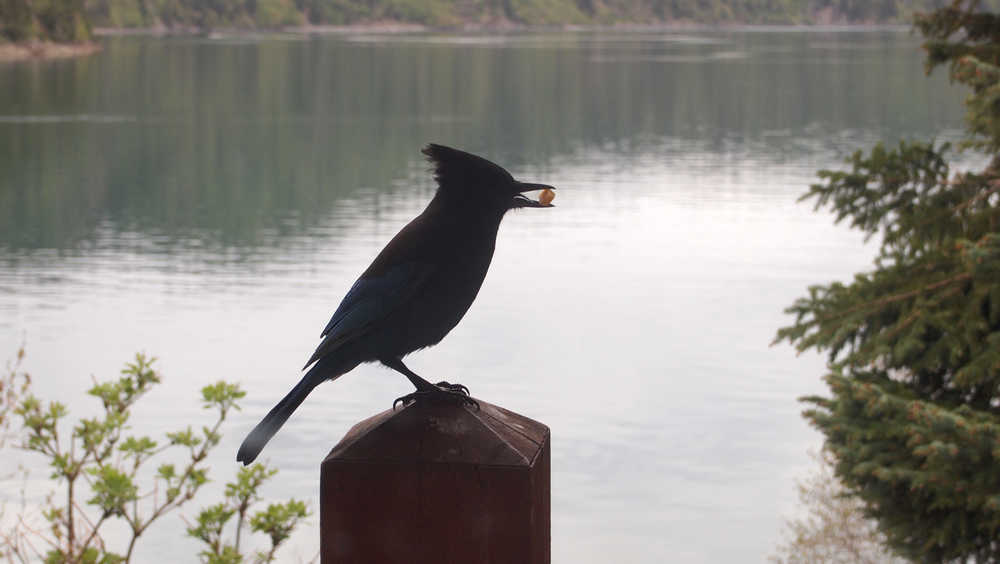I recently co-authored an article in Bird Conservation International on the demographics of Mariana Crows. While always pleased to have a paper published in a scientific journal, I was absolutely dismayed that in the 15 years since I last studied Mariana Crows, it became officially extirpated from Guam because of the brown tree snake, and declined from 225 known breeding pairs to only 60 on Rota, a tiny island and the last place on earth these birds exist in the wild. The Mariana Crow is now red-listed as one of the world’s critically endangered species by the International Union for Conservation of Nature (IUCN).
For any number of reasons, I find this disheartening. First, the Mariana Crow is one of almost 17,000 species that the IUCN forecasts are likely to go extinct. Second, I know how much effort was spent over two decades to help Mariana Crows survive on Guam, constructing electric barriers around nest trees (to keep snakes away) at night, releasing crow chicks raised from eggs produced by both wild and captive parents, and shooting and trapping predators.
But the biggest reason is that I really respect Mariana Crows as only someone can who has chased them for years in tropical jungles of the Western Pacific, tracking the breeding success (or not) of pairs year-round. On both Guam and Rota, I staffed field stations with up to 8 biologists who, wearing varying amounts of camouflage, gave chase to these very smart birds.
One of the rites of passage for new biologists to the islands was to discover that once a crow knew where you were, their overt behavior was always suspect, designed to lead you AWAY from the nest, not towards it. A trick sometimes used when we were close to an active nest that couldn’t be found, was to have two people approach the area, allow the male crow “lead” one of the transgressors away from the nest, while the other person lay in waiting until either the female on the nest or the returning male called to each other very quietly (more a grunt than a caw), thereby giving away the location of the nest in a very dense forest canopy.
Members of the crow family (Corvidae or corvids) are indeed some of the smartest birds due to their longevity and high brain-to-body mass ratio that is equal to great apes, whales and dolphins, and almost that of humans. The New Caledonian Crow, for example, not only uses sticks as tools to capture grubs, it has been seen making hooks by bending wire! Other corvids, such as many crows, magpies and jays, are excellent mimics. Some species of scrub jays engage in “helping at the nest,” in which young from one brood will help raise a subsequent brood by the same parents. Crows can count to at least seven, and many corvids have a highly-developed ability to re-locate cached food items.
We are lucky here on the Kenai Peninsula. By virtue of being at the intersection of the western-most reach of the boreal forest and the northern-most reach of the coastal rainforest, we have five corvid species. The Common Raven, Northwestern Crow, Gray Jay, Steller’s Jay and Black-billed Magpie reside year-round. Although I never did quite figure out how many places in North America have five or more corvids living together, I can tell you that it’s uncommon.
Christmas Bird Count data (available online) suggests that statewide winter populations of these five species have either remained the same or increased over the past 3 or 4 decades despite wide fluctuations. Anecdotally, we’ve seen increases in Steller’s Jay, Northwestern Crow and magpie on the western side of the Kenai Peninsula in recent times, which may reflect an urbanizing landscape as most corvids coexist well with humans. An interesting book entitled “In the Company of Crows and Ravens” postulates that corvids and humans have culturally co-evolved over the millennia.
If you’re interested in corvids, there are many other good contemporary books, mythologies from many cultures, and many excellent poems —“The Raven” by Edgar Allen Poe to name one. The collected writings of Peter Kalifornsky has several Kenaitze stories about “Ggugguyni” (raven) and “Gizha” (the camp robber or gray jay).
While corvids on the Kenai are a very long ways away from being in the same dire straits as Mariana Crows, disease looms as a concern. When West Nile Virus first appeared in North America in 1999, this mosquito-borne virus caused very high rates of mortality in corvids, killing 5,500 crows during the first four months of its introduction. Although it has spread westward, this virus is still not in Alaska and recent research indicates it has mutated to be less lethal to corvids.
More locally, beak abnormalities (such as crossed bills) in chickadees and corvids have been studied for several years in the Cook Inlet basin by Colleen Handel at the USGS Alaska Science Center. While nothing is conclusive yet, most evidence suggests that environmental contaminants such as organochlorines may be culpable.
So sit back and really pay attention the next time a corvid shows up at your feeder. They’re fascinating to watch and we’re unusually blessed with five species.
John Morton is the supervisory biologist at Kenai National Wildlife Refuge. Find more information at http://www.fws.gov/refuge/kenai/ or http://www.facebook.com/kenainationalwildliferefuge.

